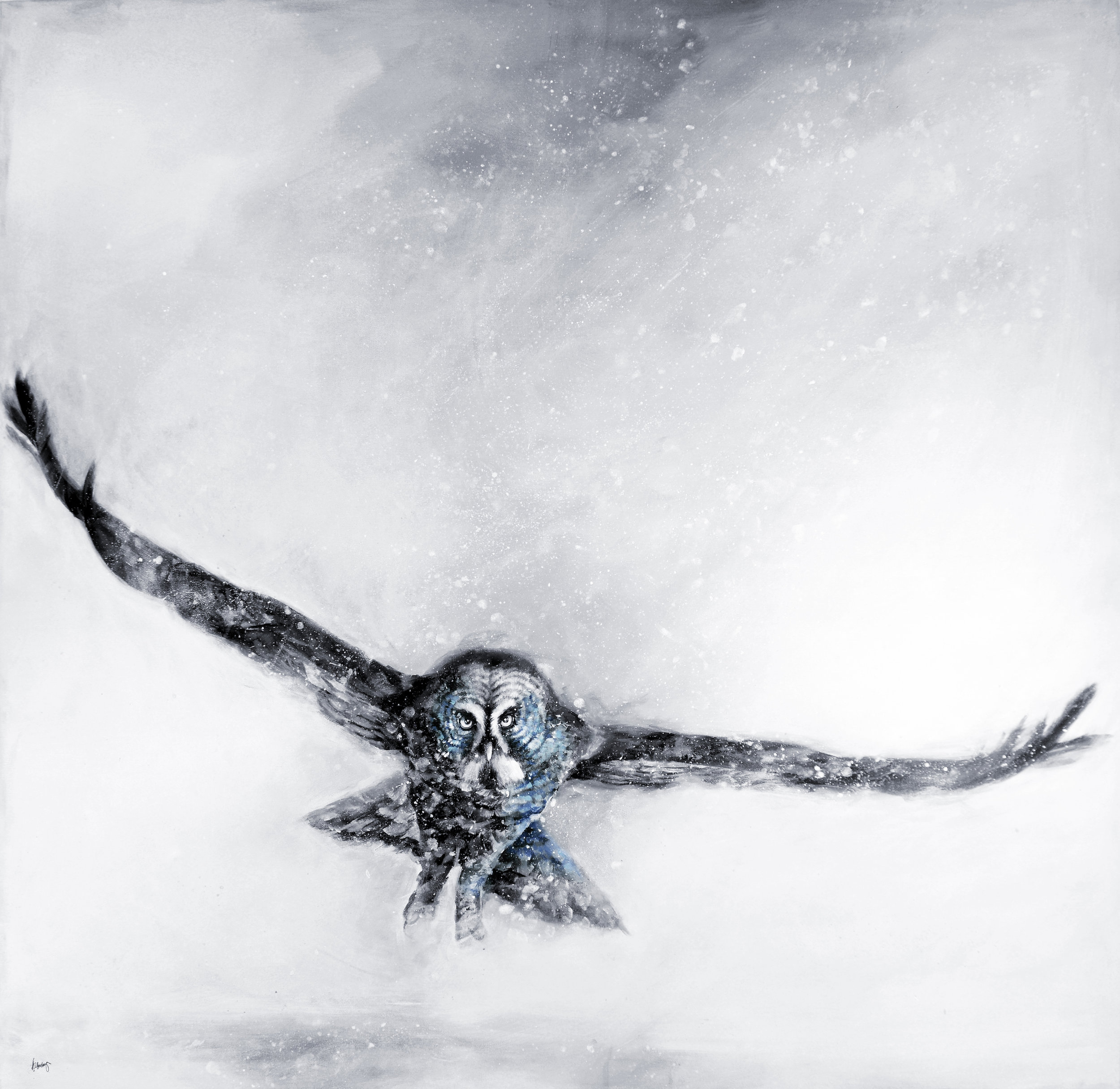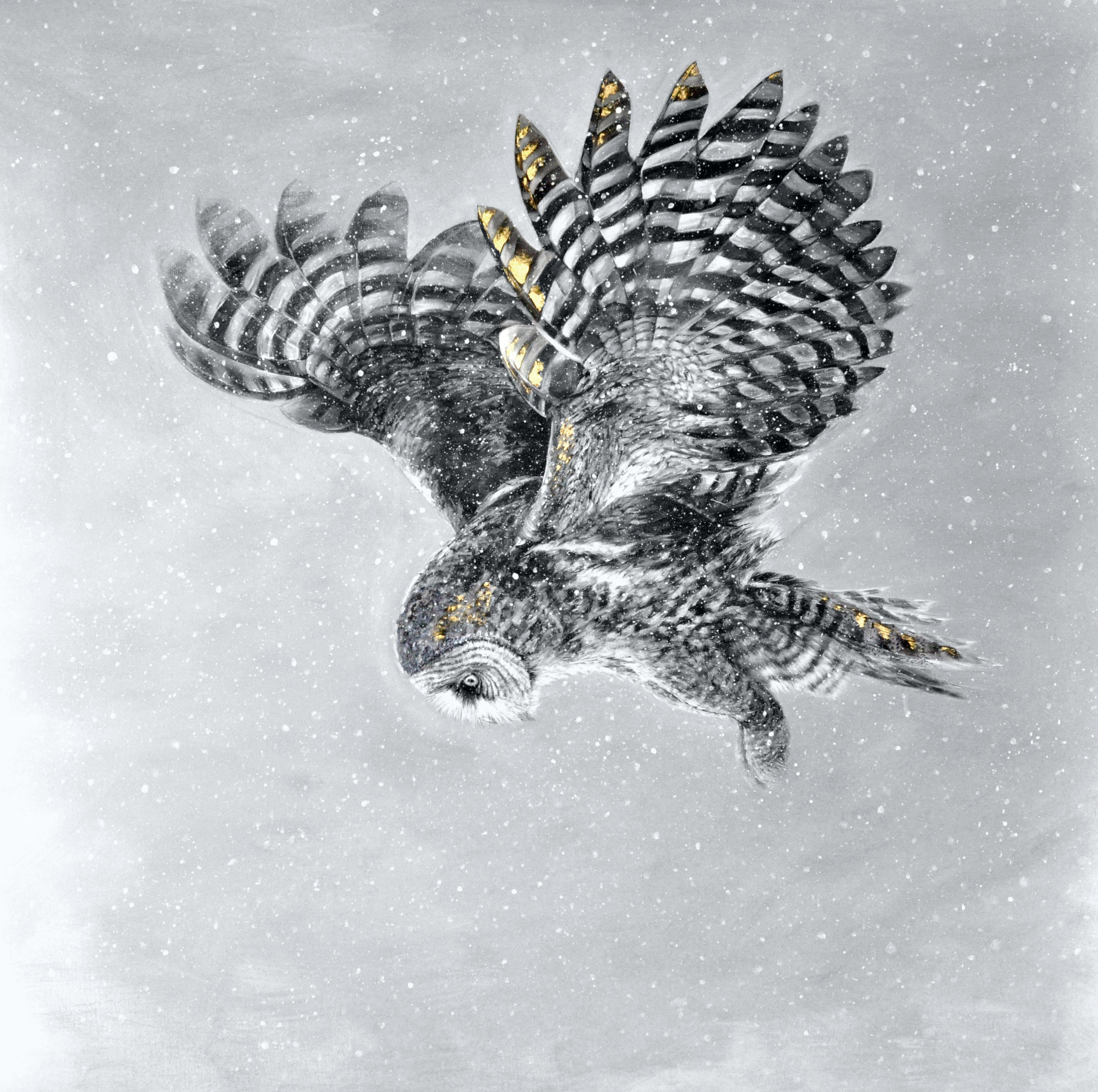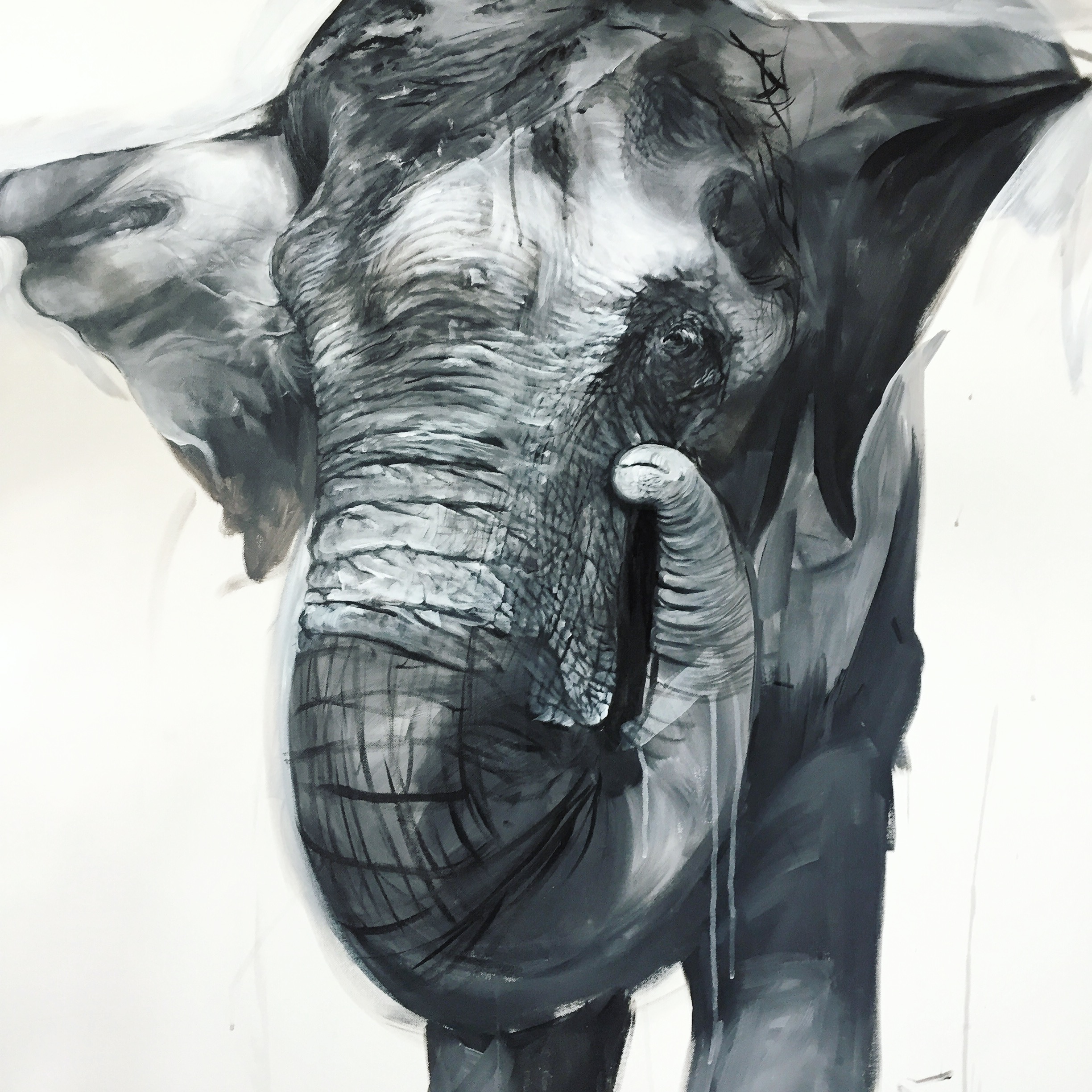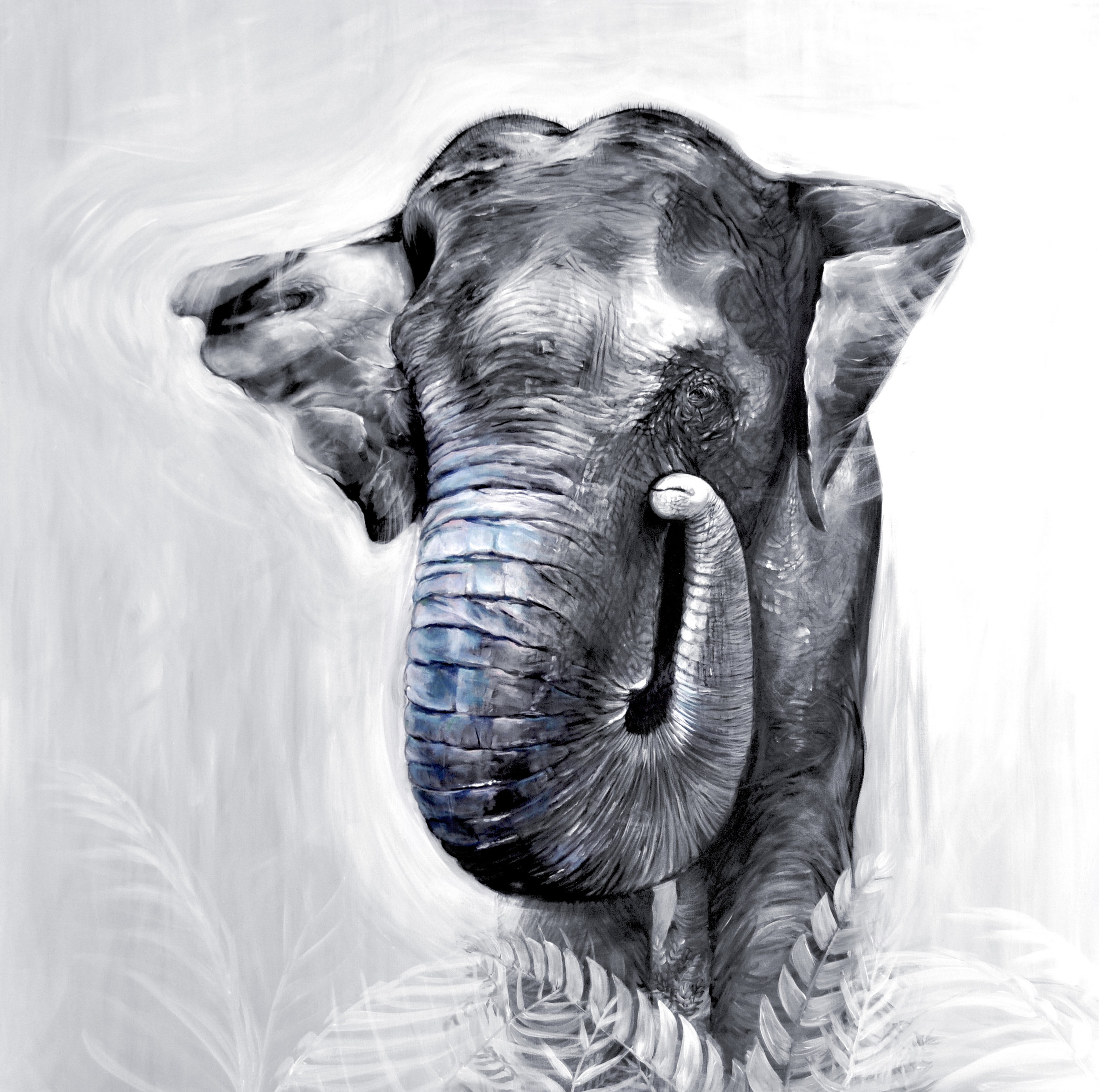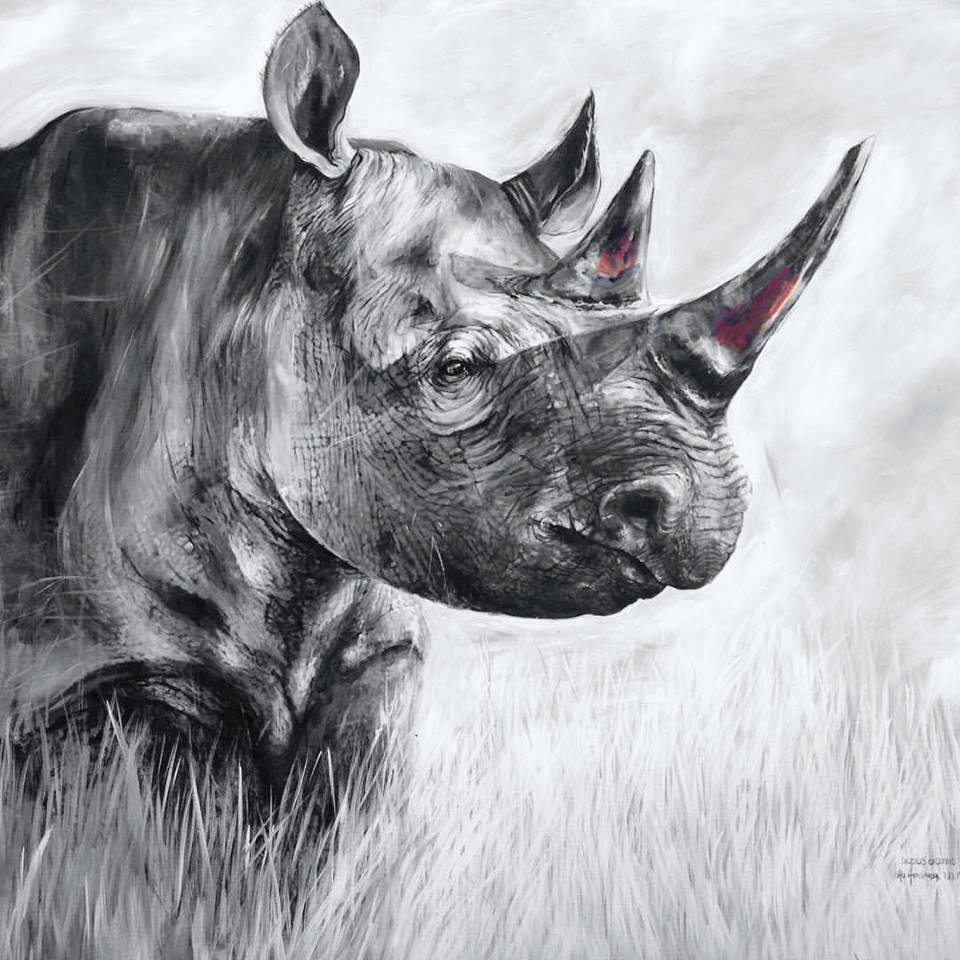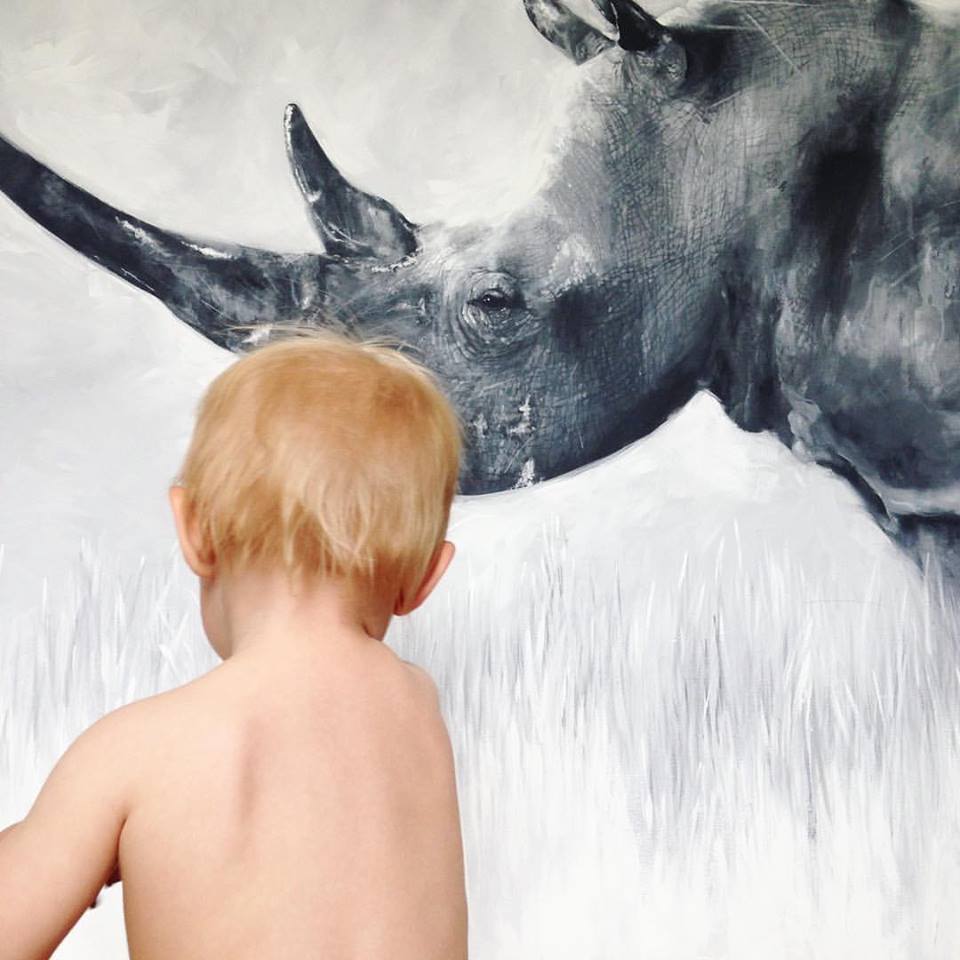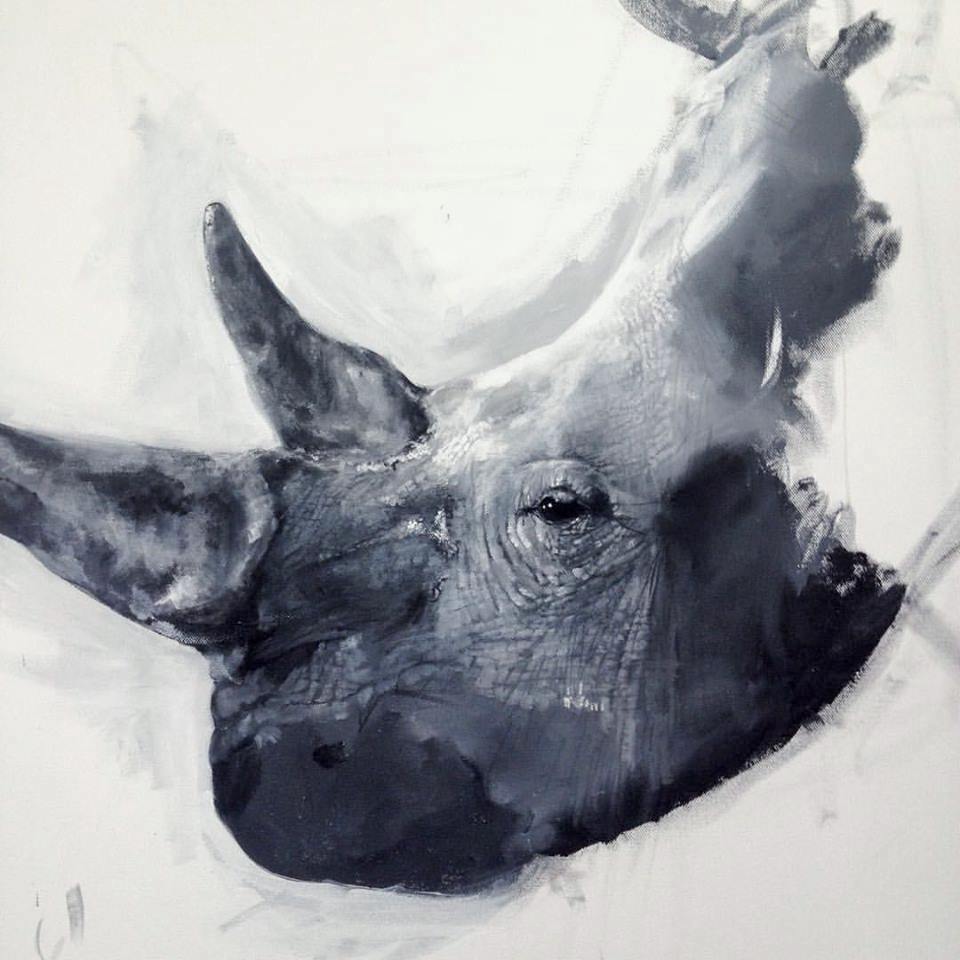48x48 Acrylic painting of the Grey Wolf - SOLD (Prints Available HERE)
10% of the sale price was donated to the California Wolf Center and their “dedication to the return of wild wolves to their natural habitat and to the people who share the landscape with them.”
Canis lupus, Grey Wolf
Conservation Status: Federally listed as endangered throughout the lower 48 states, except for Minnesota and a portion of the Northern Rocky Mountain Distinct Population Segment (DPS) encompassing Idaho, Montana and parts of Oregon, Washington and Utah.
MORE on listing status for California
MORE on listing status for Nevada
Major threats: Human / animal conflict.
Sightings:
In 2011 a lone grey wolf, made its way into California from Oregon. In August of 2015, it was confirmed that California has its first wild wolf pack in almost 100 years! The Shasta pack includes a breeding pair and five puppies. Before this wolves had been absent from California since 1924. Read about it : HERE
Nevada has also had good news! “The Nevada Department of Wildlife has confirmed a wolf from the Shasta Pack in Northern California was spotted near Fox Mountain in northwestern Nevada in November 2016. Fox Mountain is in northern Washoe County, west of the Black Rock Desert.” Read more : HERE
Reintroduction
Wolves were reintroduced to Yellowstone in the 1990s and now the wolf has begun to return to California on its own! Yellowstone says, “Wolves are causing a trophic cascade of ecological change, including helping to increase beaver populations and bring back aspen, and vegetation.” HERE ….But USA Today says, “Yellowstone is still not 100% back to normal – and it may never be.” Read why: HERE
Losing an animal to extinction is tragic, but the tragedy doesn’t stop there. There is a ripple effect that changes the ecosystem too.
“The conditions that changed while wolves were absent created conditions that made it very difficult to restore willows.”-Tom Hobbs, a Colorado State University ecology professor.
What can we do?
We can become aware!
"The lesson is let’s not let things get as bad as they did with 70 years without wolves."-Bill Ripple, professor of ecology at Oregon State University,
The California Wolf Center’s “is dedicated to the return of wild wolves to their natural habitat and to the people who share the landscape with them. We foster communities coming together to ensure wolves, livestock, and people thrive in today’s world.” Find out how to get involved: HERE
The Endangered Wolf Center ‘s mission is, “To preserve and protect Mexican wolves, red wolves and other wild canid species, with purpose and passion, through carefully managed breeding, reintroduction and inspiring education programs.” Find out how to get involved: HERE
AND….If you haven’t read about the meaning behind, SCARCE, take a look HERE!
ALI

